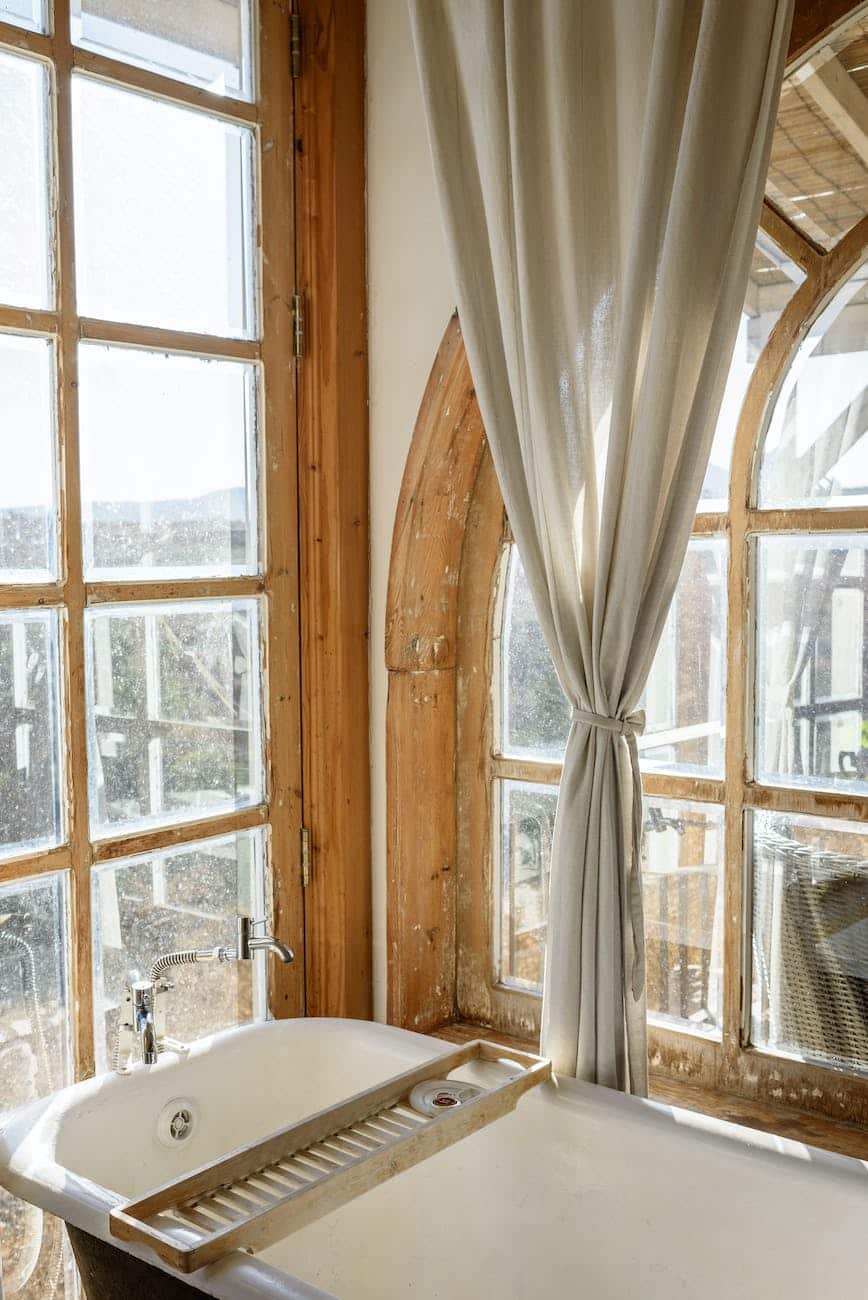The Concept of Universal Design
The world of bathroom renovations has seen many trends, but one concept that stands the test of time is universal design. This approach to designing spaces is fundamental for creating bathrooms that are accessible, safe, and comfortable for all users, regardless of age, ability, or size.
Understanding Universal Design
Universal design is a framework that involves creating environments that can be accessed, understood, and used to the greatest extent possible by all people. It’s about removing barriers and creating spaces that are inherently accessible to everyone.
This design concept emphasizes usability, adaptability, safety, and convenience. It caters not only to the needs of the average person but also considers those with disabilities, the elderly, and children. Universal design recognizes the wide range of human abilities and ensures that buildings, products, and environments are inherently accessible.
Importance of Universal Design in Bathroom Renovations
When it comes to bathroom renovations, incorporating the principles of universal design can make a significant difference. Bathrooms can often pose challenges for individuals with mobility issues or those who require additional support. By incorporating universal design principles, a bathroom can be transformed into a space that is easy to navigate, safe, and comfortable for all users.
Enhancing bathroom accessibility is not only beneficial for individuals with specific needs but also adds value to the property. Future-proofing the bathroom ensures that it can adapt to changing needs, making it a smart investment.
With an aging population and a growing awareness of inclusivity, the importance of universal design in bathroom renovations cannot be overstated. It’s a key aspect to consider whether you’re planning a residential or commercial bathroom renovation.
For further guidance on the process, explore our comprehensive guide on bathroom renovations. It offers a wealth of information, from initial planning phases to choosing the right materials, helping you create a bathroom that is both beautiful and universally accessible.
Key Aspects of a Universally Designed Bathroom
The principles of universal design can be applied to bathroom renovations to create a safe, accessible, and flexible space for individuals of all ages and abilities. A universally designed bathroom takes into consideration three key aspects: safety and accessibility, flexibility in use, and simple and intuitive use.
Safety and Accessibility
Safety and accessibility are the cornerstone of universal design. When embarking on a bathroom renovation, it’s essential to prioritize features that enhance safety and provide easy access. This can include installing non-slip flooring, ensuring there’s adequate lighting, and incorporating support features such as grab bars.
For instance, a walk-in shower with a low threshold can be more accessible for individuals with mobility issues compared to a traditional bathtub. Similarly, a toilet with an adjustable height can cater to the needs of both children and adults. These design choices can significantly improve the safety and accessibility of the bathroom, making it a more comfortable space for everyone.
Flexibility in Use
Flexibility in use involves designing a bathroom that caters to a wide range of preferences and abilities. This can be achieved by incorporating adjustable elements, such as shower heads and mirrors, that can be easily modified to suit the needs of different users.
For instance, an adjustable shower head can be lowered for children or raised for adults, while a mirror that can be tilted or adjusted in height can be used comfortably by individuals of different heights or those who might be seated. This flexibility can make the bathroom more user-friendly and adaptable over time, catering to the evolving needs of the household or property users.
Simple and Intuitive Use
Finally, a universally designed bathroom should be simple and intuitive to use. This means that the design and layout of the bathroom should be straightforward and easy to understand, regardless of the user’s experience, knowledge, or cognitive ability.
For instance, lever handles can be more intuitive and easier to operate than traditional knobs, especially for children or individuals with limited hand strength. Similarly, clear and visible signage can help users easily identify different elements of the bathroom, such as hot and cold water taps.
Incorporating these key aspects into your bathroom renovation can help create a space that is safe, accessible, and comfortable for all users. For more tips on enhancing accessibility in your bathroom renovation, check out our guide on bathroom renovations: a step-by-step guide for homeowners.
Universal Design Bathroom Renovation Tips
The core objective of universal design is to make every living space accessible and comfortable for all individuals, regardless of age or physical ability. When it comes to enhancing accessibility in bathroom renovations, several elements should be considered.
Enhancing Accessibility with Walk-in Showers
Walk-in showers eliminate the need for stepping over high tub edges, thus reducing the risk of slips and falls. They offer easy access for individuals of all ages and those with mobility issues. A shower seat can be included for added safety and comfort.
Importance of Non-slip Floor Materials
Bathroom floors can become slippery when wet, creating a safety hazard. Opting for non-slip floor materials, such as textured tiles, can significantly reduce this risk. Non-slip mats can also be placed in high-risk areas like the shower or tub.
The Role of Adjustable Shower Heads
Adjustable shower heads allow users to change the height and direction of the water flow, providing a more comfortable shower experience for individuals of varying heights and abilities. Handheld shower heads are particularly helpful for those with limited mobility, as they can be used while seated.
Incorporating Grab Bars for Support
Grab bars provide necessary support and stability, particularly for those with balance issues. They should be installed in key areas like the shower, tub, and toilet. It’s important to ensure that they are securely fastened to the wall to support the user’s weight.
Opting for Lever Handles Over Knobs
Lever handles are easier to operate than knobs, especially for individuals with limited hand strength or dexterity. They can be used on sink faucets, shower controls, and doors for increased accessibility.
Ensuring Adequate Lighting
Good lighting is essential in a bathroom to prevent accidents. Consider installing bright, non-glare lights that illuminate the entire room adequately. Night lights can also be added for safety during nighttime visits.
Considering the Right Bathroom Layout
The bathroom layout should allow for easy navigation and use of all fixtures. Ample space should be left around the toilet, shower, and sink to accommodate a wheelchair or walker if necessary. Doorways should be wide enough for easy access, and switches and controls should be placed at reachable heights.
By incorporating these universal design features, you can create a safe and accessible bathroom that caters to the needs of all users. For more detailed information on bathroom renovations, refer to our comprehensive guide on bathroom renovations or explore our article on bathroom renovations: a step-by-step guide for homeowners.
Balancing Aesthetics with Accessibility
While enhancing accessibility is paramount in universal design, it doesn’t mean aesthetics should take a backseat. The goal is to create a space that is both visually appealing and functional. This section outlines how to strike a balance between aesthetics and accessibility in a bathroom renovation.
Choosing Aesthetically Pleasing but Functional Fixtures
When planning a universal design bathroom renovation, it’s important to select fixtures that combine form and function. For instance, a wall-mounted sink with a clear space beneath allows for easy wheelchair access, while also giving the bathroom a sleek, modern look. Similarly, a stylish grab bar can double as a towel rack.
In terms of faucets, lever handles are more accessible than knobs and can add a contemporary touch to the space. Walk-in showers with frameless glass doors not only enhance accessibility, but also create an open, airy feel.
For more tips on choosing the right materials for your renovation, check out our article on choosing the right materials for your bathroom renovation.
Importance of Neutral Colors and Natural Light
Neutral colors and natural light can make a significant difference in creating an inviting and accessible bathroom. Light tones can make the space appear larger and more open, while also reducing the risk of accidents by making it easier to see.
Natural light is not only aesthetically pleasing, but also beneficial for individuals with vision impairments. Consider adding a skylight or enlarging the window size to let in more sunlight. If privacy is a concern, frosted glass or window coverings can be used.
Creating an Open and Spacious Environment
An open and spacious layout is another key aspect of a universally designed bathroom. This not only creates a sense of luxury and relaxation, but also allows for easy movement and accessibility. Consider removing any unnecessary barriers and expanding doorways for wheelchair access.
Installing wall-mounted fixtures can also free up floor space, giving the bathroom a clean, uncluttered look. If the space allows, you could even consider including a turning circle for wheelchairs.
For more ideas on how to maximize small spaces, take a look at our article on maximizing small spaces: innovative bathroom renovation ideas.
In summary, a universally designed bathroom does not have to compromise on aesthetics. With careful planning and thoughtful design choices, you can create a bathroom that is both accessible and visually appealing. For more bathroom renovation tips and tricks, explore our bathroom renovations section.
Planning Your Universal Design Bathroom Renovation
Implementing universal design principles in a bathroom renovation project requires meticulous planning. This section will guide you through the steps of evaluating your current bathroom, identifying your needs and goals, creating a renovation plan, and working with professionals.
Evaluating Your Current Bathroom
The first step in planning a renovation is to evaluate your existing bathroom. Assess its current state, functionality, and safety aspects. You need to identify the areas that require improvements to enhance accessibility and comfort. Consider factors like the current bathroom layout, fixtures, and whether the existing design takes into account the needs of all users, regardless of their age or physical ability. This evaluation will serve as a foundation for your renovation project.
Identifying Your Needs and Goals
Once you have a clear understanding of your current bathroom’s strengths and weaknesses, you can identify your needs and goals for the renovation. This step involves defining what you hope to achieve with the project. Are you aiming to enhance safety and accessibility? Or do you want to create a more flexible and intuitive space that can cater to the needs of all users? These objectives will guide your decisions throughout the renovation process, from choosing fixtures to selecting the layout. For tips on how to achieve an upscale renovation on a budget, you can read our article on luxury on a budget: tips for an upscale bathroom renovation.
Creating a Renovation Plan
After identifying your goals, it’s time to create a renovation plan. This plan should detail all the changes you intend to make, including adjustments to the layout, replacement of fixtures, and any additional features you plan to incorporate. Make sure to consider the principles of universal design in your plan, such as safety, accessibility, flexibility, and ease of use. Detailed planning will help ensure that your renovation project runs smoothly and results in a bathroom that meets your identified needs and goals. For a detailed step-by-step guide, you can check out our article on bathroom renovations: a step-by-step guide for homeowners.
Working with Professionals
While some aspects of a bathroom renovation can be a DIY project, implementing universal design principles often requires professional expertise. Working with professionals such as architects, interior designers, or specialized contractors can help ensure that your renovation meets all the necessary safety standards and is both functional and aesthetically pleasing. Professionals can also help you avoid common pitfalls and can bring innovative ideas to your project. For more advice on this, read our article on expert advice: common bathroom renovation mistakes to avoid.
By following these steps, you can plan a successful bathroom renovation that enhances accessibility and comfort for all users. Remember, a well-designed bathroom should cater to the needs of all individuals, regardless of age or physical ability. So, take the time to plan and execute your renovation project with care, always keeping the principles of universal design at the forefront.




